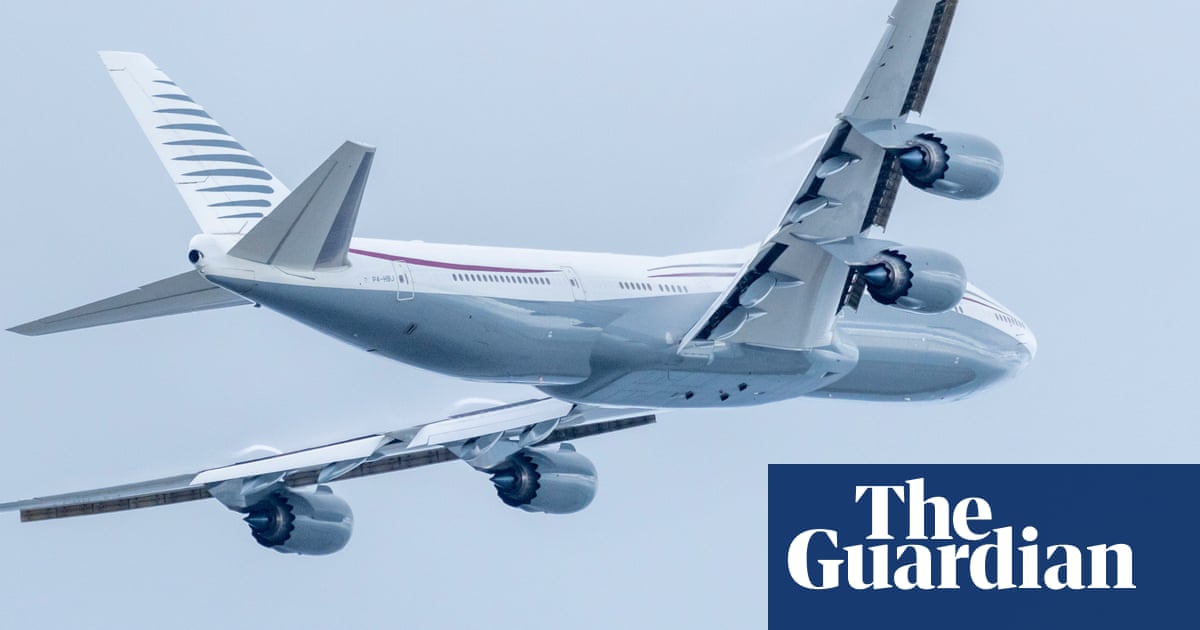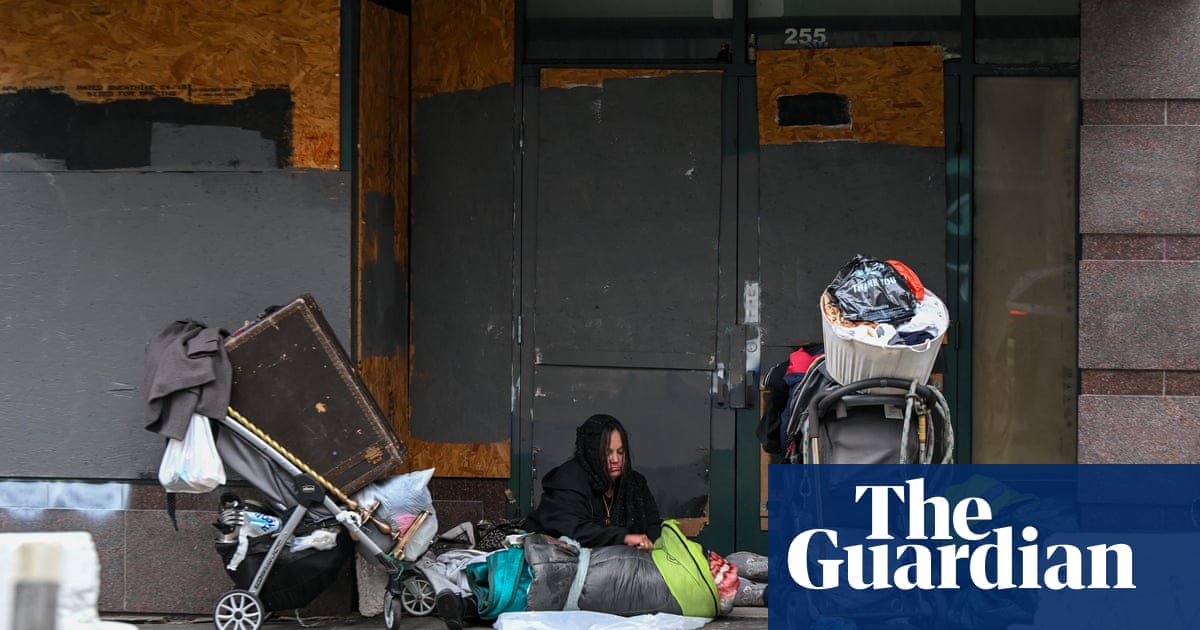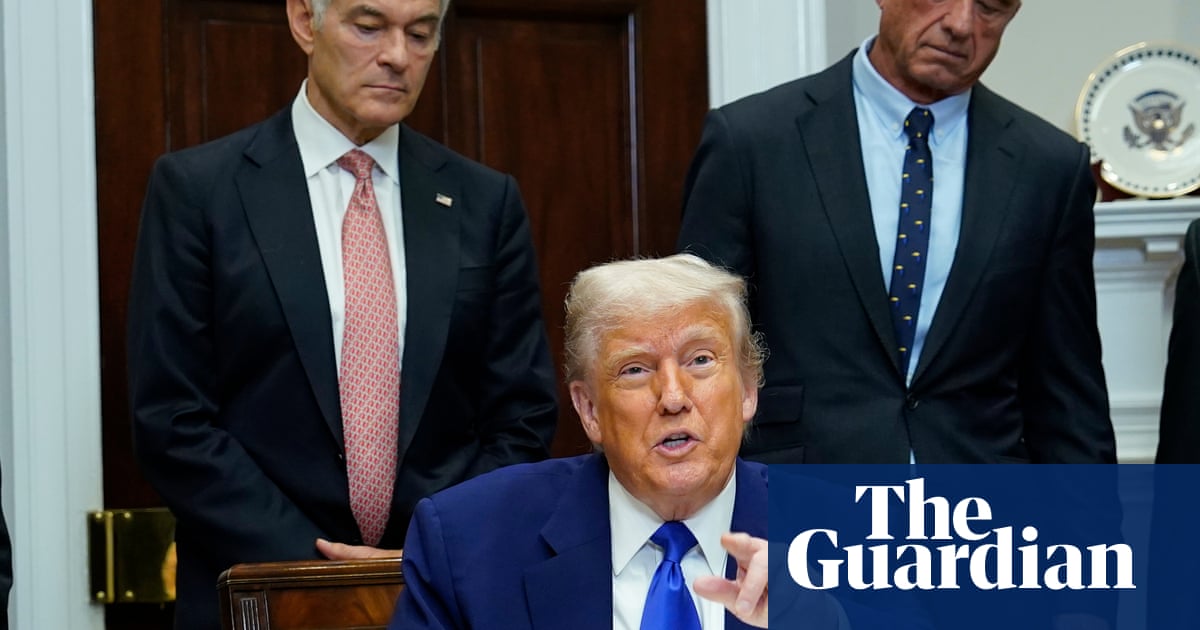The plans, first announced in a social media post on Sunday, triggered a sharp fall in drugmakers’ share prices on Monday. However, these later reversed amid growing scepticism that the shake-up would be as severe as promised.
What is Trump proposing?
His order directs the US health secretary, Robert Kennedy, to sendprice targets to the pharmaceutical industry and kick off a round of negotiations within 30 days to reduce prices from their current levels. The US currently pays by far the most for its medications.
If talks hit an impasse, Kennedy is instructed to enforce the “most favoured nation” pricing model and limit US prices to the lowest rates paid by other wealthy countries. At a press conference, the US president said this would amount to price cuts of between 59% and 90%.
Health officials said that, unlike a similar push in Trump’s first term, the new policy would target not just Medicare, the US government-funded programme that covers people aged 65 and older, but also Medicaid, for people on low incomes, and treatments covered by private health insurance.
Officials also said it was fair to assume that slimming drugs known as GLP-1s, such as Wegovy, Ozempic and Zepbound, would be included. Trump mentioned the “fat shot drug” and said he had become aware of the huge price differences when a businessman told him he had bought Ozempic for $88 (£67) in London, but was paying $1,300 for it in New York.
Haven’t we been here before?
Trump’s attempts during the final months of his first term to bring down drug prices were struck down in federal court. That “most favoured nation” plan would have tied reimbursements for 50 drugs by Medicare to the lowest prices paid by certain other countries.
A federal judge blocked the move after ruling that the administration had failed to give the public a chance to comment. The Biden administration dropped the proposal under pressure from hospitals and drug companies, but last year Medicare started negotiating some prices for the first time, under the Inflation Reduction Act.
How would the scheme work in practice?
There is not a lot of detail in the executive order and it is unclear what impact, if any, it would have on millions of Americans with private health insurance. The federal government has the most power to influence the prices of drugs covered by Medicare and Medicaid.
Experts said the new policy kept pressure on pharmacy benefits managers (PMBs), the “middlemen” such as Cigna, CVS and UnitedHealth that negotiate drug prices with pharma companies in the US. The White House wants drugmakers to sell more products directly to patients.
The main US lobby group, the Pharmaceutical Research and Manufacturers of America (PhMRA), said the US was the only country in the world that let PMBs, insurers and hospitals take 50% of every dollar spent on medicines, and that the amount going to middlemen often exceeded the price in Europe. “Giving this money directly to patients will lower their medicine costs and significantly reduce the gap with European prices,” it said.
The pharmaceutical industry is likely to push back hard against the proposed shake-up. The US health policy research group KFF told NBC News it “would expect the drug industry to throw every legal argument at this proposal”. However, AstraZeneca and the Wegovy and Ozempic maker, Novo Nordisk, struck a conciliatory note, saying they would engage with policymakers.
What impact could it have?
The Medicare and Medicaid programmes together account for two-fifths of US drug sales. Analysts at UBS have calculated that European drugmakers could see an average hit of 6% to profits if “most favoured nation” prices are introduced on the top 50 drugs in the US, while US companies would face a 10% drop.
Bristol Myers Squibb and Pfizer would be worst-hit among the US pharma companies and Eli Lilly least-affected, while in Europe AstraZeneca and Novo Nordisk would take the brunt and GSK and Sanofi would suffer the least.
PhRMA has warned that the planned price cuts would “jeopardise the hundreds of billions [of dollars that] our member companies are planning to invest in America”. Profits from US drugs prices have long helped fund the development of new treatments used around the world.
In recent weeks big pharma companies have announced a spate of big investments, adding up to close to $200bn, as they sought to head off a threatened sector-specific tariff. As the US remains the biggest market for most international drugmakers, it is unlikely that Trump’s order will derail those investment plans.
How does drug pricing work around the world?
Governments determine the price of medications in the UK, the EU and other countries by negotiating directly with pharma companies, and often pay less. Drugmakers offer tiered pricing, with rates varying depending on the destination country and bigger discounts for poorer nations.
Wegovy has a list price of $1,349 for a month’s supply in the US, while in the UK a starting dose costs from £130 a month, and in Germany the drug costs between €170 (£143) and €300 a month. The Democratic senator Bernie Sanders, a presidential candidate in 2020, has called the US “Novo Nordisk’s cash cow”.
A 2021 study found that drug prices in the US were “substantially higher” than those in each of 32 other countries. Compared with all those countries combined, US prices were 256% higher.
What does all this mean for threatened pharma tariffs?
It seems that a sector-specific levy is off the table, and products have been spared the 25% tariffs that other sectors such as steel, aluminium and cars have endured. Trump hinted at a reprieve earlier this month, saying the US administration would give companies “a lot of time” to move their operations to the country before facing a “tariff wall”.

 German (DE)
German (DE)  English (US)
English (US)  Spanish (ES)
Spanish (ES)  French (FR)
French (FR)  Hindi (IN)
Hindi (IN)  Italian (IT)
Italian (IT)  Russian (RU)
Russian (RU)  5 hours ago
5 hours ago
























Comments